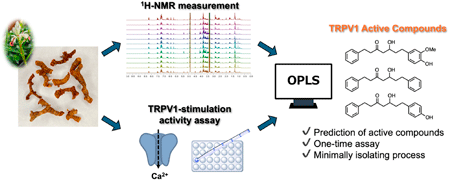-
Tomohisa Kanai
School of Pharmacy, Kitasato University, 5–9–1 Shirokane, Minato-ku, Tokyo 108–8641, Japan
-
Tatsuya Shirahata
責任著者
 https://orcid.org/0000-0002-8812-4555
https://orcid.org/0000-0002-8812-4555
School of Pharmacy, Kitasato University, 5–9–1 Shirokane, Minato-ku, Tokyo 108–8641, Japan Kitasato University Oriental Medicine Therapy Center, Kitasato Institute Hospital, Kitasato University, 5–9–1 Shirokane, Minato-ku, Tokyo 108–8641, Japan -
Shunsuke Nakamori
School of Pharmacy, Kitasato University, 5–9–1 Shirokane, Minato-ku, Tokyo 108–8641, Japan
-
Rin Sato
School of Pharmacy, Kitasato University, 5–9–1 Shirokane, Minato-ku, Tokyo 108–8641, Japan
-
Akito Hayashi
School of Pharmacy, Kitasato University, 5–9–1 Shirokane, Minato-ku, Tokyo 108–8641, Japan
-
Yota Koizumi
School of Pharmacy, Kitasato University, 5–9–1 Shirokane, Minato-ku, Tokyo 108–8641, Japan Kitasato University Oriental Medicine Therapy Center, Kitasato Institute Hospital, Kitasato University, 5–9–1 Shirokane, Minato-ku, Tokyo 108–8641, Japan
-
Kenichiro Nagai
School of Pharmacy, Kitasato University, 5–9–1 Shirokane, Minato-ku, Tokyo 108–8641, Japan
-
Susumu Ohkawara
Department of Health Pharmacy, Yokohama University of Pharmacy, 601 Matano-cho, Totsuka-ku, Yokohama 245–0066, Japan
-
Takayuki Hoshino
Kitasato University Oriental Medicine Therapy Center, Kitasato Institute Hospital, Kitasato University, 5–9–1 Shirokane, Minato-ku, Tokyo 108–8641, Japan
-
Toshiko Tanaka-Kagawa
Department of Health Pharmacy, Yokohama University of Pharmacy, 601 Matano-cho, Totsuka-ku, Yokohama 245–0066, Japan
-
Hideto Jinno
Faculty of Pharmacy, Meijo University, 150 Yagotoyama, Tempaku-ku, Nagoya 468–8503, Japan
-
Yoshinori Kobayashi
 https://orcid.org/0000-0002-4289-7392
https://orcid.org/0000-0002-4289-7392
School of Pharmacy, Kitasato University, 5–9–1 Shirokane, Minato-ku, Tokyo 108–8641, Japan Kitasato University Oriental Medicine Therapy Center, Kitasato Institute Hospital, Kitasato University, 5–9–1 Shirokane, Minato-ku, Tokyo 108–8641, Japan
電子付録
2025 年 73 巻 3 号 p. 195-204
- Published: 2025/03/07 Received: 2024/10/21 Released on J-STAGE: 2025/03/07 Accepted: 2024/11/05 Advance online publication: - Revised: -
(EndNote、Reference Manager、ProCite、RefWorksとの互換性あり)
(BibDesk、LaTeXとの互換性あり)


